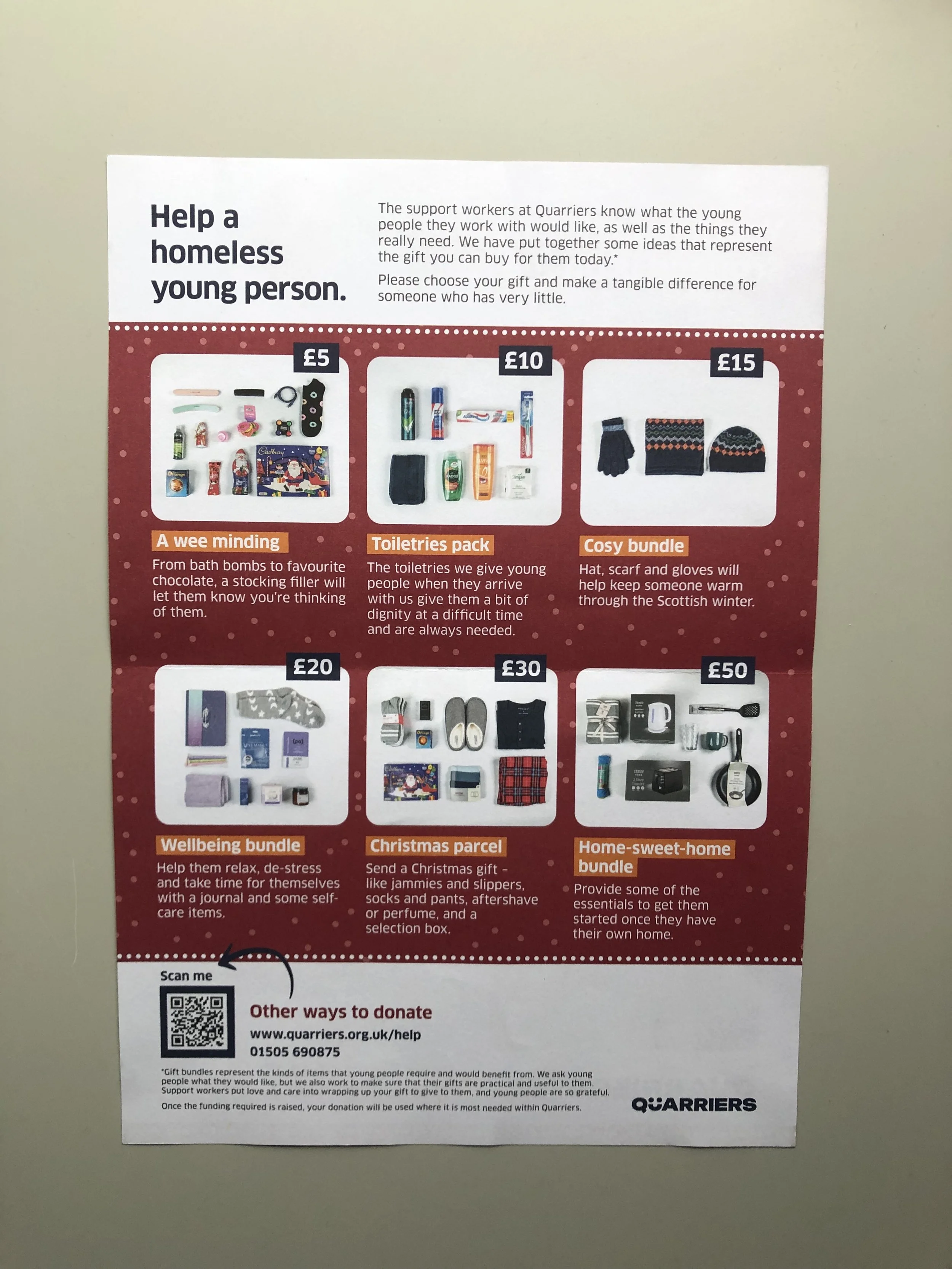From Good to Great: Nonprofit Direct Mail Appeal Review
Who has received a nonprofit donation appeal letter recently?
Here's one I received from Quarriers yesterday.







“Writing effective fundraising appeal letters is an art and a science.” (DonorBox, 2023)
As someone who helps nonprofits create appeals with maximum impact, I am always interested to see what organizations come up with.
Here’s what I like about this appeal:
Storytelling. By appealing emotionally with a client story, they are painting a picture of what Christmas (and life) are like for youth experiencing homelessness. Through the client story they are clearly demonstrating how your gift will make a difference. They are building credibility by having a majority of the appeal come from a counselor who works day-to-day with their youth participants. Their storytelling also answers the two essential questions: And why should I care? Why now?
Layout. Great use of photos, color, headings, and sectioning. They have a clear message and the layout makes it easy to digest.
Framing. The letter effectively uses you/your 20+ times and other language like "join us" and "together." There is an assumption that the reader will join their effort (for example: "Yes! I would like to let a homeless young person know someone cares."). They are framing the reader as the hero.
Frictionless Giving. They provide multiple ways to give: mail (with a convenient remit envelope and easy-to-complete form), online (scan the code - this is where I donated, and with Apple Pay enabled, it took less than a minute!), and by phone.
Donor Preferences. Their opt-in user experience allows donors to consent to communications and what data they collect.
Clear Disclaimers. They have embraced the philosophy that clarity is kind. People are curious how their support will be used, and they share clearly how they intend to use it.
"Gift bundles represent the kinds of items that young people require and would benefit from. We ask young people what they would like, but we also work to make sure that their gifts are practical and useful to them. Support workers put love and care into wrapping up your gift to give to them, and young people are so grateful. Once the funding is required and raised, your donation will be used where it is most needed within Quarriers."
Here’s what would make it even better:
Less Text and Repetition. The appeal should tighten up and lose a page (saving $$). It’s good to repeat the call to action, but this was a bit much (for example: showcasing the gift ideas three times).
Program Data and Statistics. With more space, showcase how your program(s) are unique and answer the question “Why Quarriers?” As Nathan Hill with NextAfter (2018) explains, one fundamental question that all potential donors are asking (even if its subconsciously) is “Why should I give to you, rather than some other organization, or at all?” Data could include how many people they are working with, what their success rate is (while also defining success), and measurable outputs like X number of counseling sessions, X nights of shelter provided, etc.
People First language. People experience homelessness. It does not define who they are. People first language puts the person before their experience, and reminds others of our shared humanity. On their website, the St Patrick Center explains the why and how behind this fairly new practice in a clear and kind way.
More personalization. The handwriting font used for the signature and PS statement (my favorite copy of the appeal!) is a good touch. Depending on data and capacity, small tweaks and additions such as using the donor's name, handwriting an actual note and/or the mailing address, etc. will make the appeal feel more human and less machine (Philanthropy Daily, 2022).
Don’t forget to thank your supporters! Automatic emails are a must. Personalized phone calls, letters, and handwritten cards will help set you apart and increase retention.
What do you think? What am I missing?
Please share your thoughts in the comment box below!
Cited Resources:
Additional Resources:



